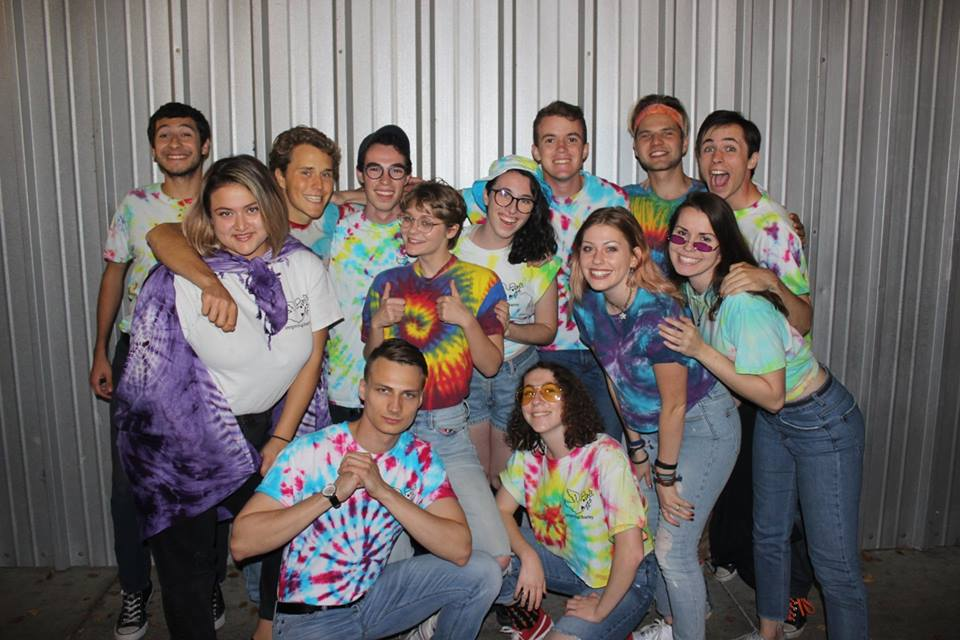|
By Katherine Schloss In high school, my theater group was inextricably linked with the improv group, and I avoided my teenage angst by attending the improv shows when I wasn’t performing in productions for theater. I always envied the improvisers, cracking up at their wit and deeming their on-stage choices as “smart” despite the fact that I knew that I couldn’t do so myself. There’s a certain boldness that comes with throwing oneself out onto a stage, when you let down your barriers and allow your body to be a vessel for the promotion of a heightened sense of hilarity.
The more politically aware I became in the days leading up the 2016 presidential election, the more I turned to comedy as a refuge from the ever-changing (and often frustrating) political climate. Not only had it become a coping mechanism, it had also become a way to realize that I wasn’t alone in my feelings of turmoil within a world that already felt unsteady. My love for stand-up comedians such as John Mulaney has become a bit ridiculous, as I begin to idolize them and their ability to turn their own personal experiences into cultivated and relatable bits, just as an artist in the more traditional sense might curate a collection. Improv, however, is a whole other beast. It involves split-second decisions, demanding that the improvisors generate material on the spot and in relation to the decisions of those around them, resulting in a sort of dance in which all of the players feed off of each others’ energies to create a larger masterpiece. Coming to college, I felt that initial drive to try new things and to diversify myself, but for whatever reason I always gravitate back to watching improv shows on Friday nights, quelling my swirling thoughts and allowing myself to give into the satisfying art of improvisation for a few charming hours. One of these groups is improv4charity, which has delivered clever shows with titles such as “Tie-Dye or Die Tying.” I decided to interview Colin Jindra, the president of the club, to gain some further insight on how improv, comedy, and art are all intertwined. Kat: How is improv an art form to you? Colin: Improv is about expressing yourself! Improv demands truth—you can’t do improv unless you let go of inhibitions and preconceptions and just let yourself come out on stage. There’s also a certain magic that comes from the live nature of improv. While some people create with a pencil or a violin, an improviser creates with the energy in the room. There’s a give and take between the performers and the audience that you can’t find in scripted theater. Improv is fleeting and volatile, and there’s an intimacy that comes from that. Every single experience with improv is different. Kat: What comedians, comedic movies, and shows do you find relevant right now and why? Colin: I think late-night television comedians are among the most noteworthy entertainers of our time. With how politically turbulent these times are, late-night comedians like Stephen Colbert, Samantha Bee, and Trevor Noah provide much-needed levity while still calling out absurdity where it exists. In my opinion, tough times are when comedians are at their most relevant. Kat: What does improv do for you personally? Colin: Improv has taught me how to present myself, engage with a crowd, and think on my feet. It trains me to recognize patterns and approach situations from a novel perspective. Most importantly, however, improv has allowed me to meet the closest friends I have ever had. Doing improv with someone really opens yourself up to them and forces you to rely on them, and because of that I have found a group of people I trust deeply. Kat: What are the origins of i4c? Colin: I4c has always been a subgroup of Theater for Charity. I cannot speak much to what i4c was like before I got here, but I know the group is only seven years old—and it has since grown very quickly in popularity in both its show attendance and its audition size. Kat: What kinds of games do you do in practices? Colin: Improv4charity performs short form improv, meaning we play mostly 3-5 minute games, like the type one would see performed on Whose Line Is It Anyway? “New Choice”, for instance, is a game in which the players act out a scene while the person running the game can prompt them to replace whatever they just said with something else. Some other examples of games are “Eulogy”, “Genre Replay”, and “Then There Was One” (an i4c original!). We also do long form sets in practice sometimes, which are 15+ minute improv sets with more free-form rules. Kat: What is it like dealing with the different improv styles of each member of the group? Do you learn from one another? Colin: Everyone has a different style, and that does give us a lot to learn from one another. I definitely think diversity of style is a strength that adds to our performances. Whenever we do a scene in practice, we have an open-floor discussion afterwards that allows everyone to offer their own input, so there is plenty of opportunity for performers to learn from one another. Kat: Do you have any plugs for future shows? Colin: Our last show of this semester is November 9th (so probably before this goes live), but information about all of our shows and events can be found at Facebook.com/improv4charity!
0 Comments
Leave a Reply. |
Archives
March 2024
Writers
All
|
